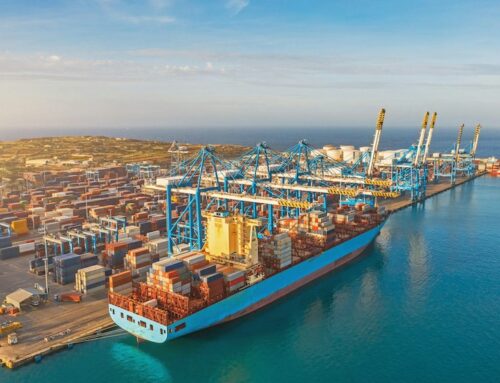Earlier this month the derailment of a freight train forced the closure of the 35-mile Gotthard rail tunnel in Switzerland. The damage is likely to impact the transportation of cargo by rail in Europe until the end of 2023. We review the historical significance of the tunnel and why it is so important to European rail transportation.
Switzerland’s transportation infrastructure has faced a major setback as the Gotthard Base Tunnel, globally recognized as the longest rail tunnel in the world, has been unexpectedly closed following a derailment on August 10th. Swiss authorities are now confronted with substantial damage that is expected to demand several months of intricate repair work.
This incident resulted in the derailment of sixteen wagons, which became immobilised within the tunnel. Fortunately, no human injuries were reported, but the significant material damage is undeniable. In total, about eight kilometres (five miles) of track and 20,000 concrete railroad ties will have to be replaced. As a result, the tunnel’s closure has been prolonged without a fixed timeframe for its resumption, leaving authorities unable to offer a definite reopening date.
Vincent Ducrot, CEO of Switzerland’s national railway operator, SBB, expressed his surprise regarding the derailment. Ducrot highlighted that the Gotthard tunnel is renowned worldwide for its high level of security, which makes this incident particularly unexpected.
History of the Gotthard Base Tunnel
Unveiled for public use in 2016, the Gotthard rail link marked the achievement of rigorous construction spanning twenty years and costing over $12 billion (£8.2 billion). The extensive rail tunnel, showcasing impressive dimensions, stood as a testament to contemporary engineering excellence and the advancement of connectivity.
The tunnel’s grand opening was celebrated with significant enthusiasm, marked by an elaborate choreographed theatrical performance featuring numerous artists. The inauguration of the Gotthard, an engineering marvel beneath the snow-capped Alpine summits, was attended by leaders from France, Italy, and Germany.
Why is the Gotthard Base Tunnel so important?
The Gotthard Base Tunnel plays a vital role as a crucial route for transporting goods and cargo, especially between Germany to the north and Italy to the south. According to the Swiss government, last year, over two-thirds of rail freight traffic passing through the Alps utilised this tunnel.
Described as the ‘crown jewel’ of the New Rail Link through the Alps (NRLA), the Gotthard Base Tunnel holds the distinction of being Switzerland’s most ambitious construction endeavour. The NRLA encompasses not only the Gotthard Base Tunnel but also the Lötschberg Base Tunnel (34.6km) and the Ceneri Base Tunnel (15.4km), making it a comprehensive transportation network. The EU railway network receives a substantial enhancement from the shortcut provided by the tunnel through the Alps, and this tunnel is an integral part of a wider freight network connecting the Dutch port city of Rotterdam to Genoa, Italy.
Closure Impact on European Rail Freight
According to SBB, the unaffected portion of the tunnel – the section that wasn’t impacted by the derailment – has now become operational for cargo trains once again, however at a significantly reduced service.
While freight usage will be given priority over passenger trains, the reduction in capacity for freight using this route is bound to lead to disruption and delays in the transportation of rail freight throughout Europe in the coming months.
Fortunately, PFE customers’ rail freight bookings will not be affected as we use a different route. However due to the tunnel’s closure, there may also be a knock-on effect to European road transportation with schedules on specific routes potentially impacted. We will keep you updated with news of any impact to the movement of your cargo at the earliest opportunity.
Image accreditation: Wikimedia Commons.








